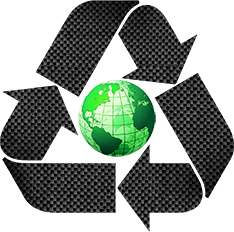Carbon Fiber Recycling
By Elizabeth Rosenberg

Senator Cantwell Introduces Carbon Fiber Recycling Act of 2015: A Step Toward a Greener Future
Senator Maria Cantwell from Washington has taken a bold step in the fight against environmental waste by introducing the Carbon Fiber Recycling Act of 2015. This legislation is not just about recycling—it's about redefining how we handle one of the most durable and widely used materials in modern industries. The bill urges the U.S. Department of Energy (DOE) to conduct a comprehensive study on the technology, life cycle, and economic impact of recycled carbon fiber. It also calls for close collaboration between the DOE, major players in the automotive and aviation sectors, and the Composite Recycling Technology Center (CRTC) in Port Angeles.
The growing demand for carbon fiber has led to an alarming increase in waste. As this high-performance material becomes more prevalent in everything from cars to airplanes, millions of pounds are being dumped into landfills annually. The CRTC is stepping up to the challenge, working to transform this waste into valuable resources. Their mission is to repurpose carbon fiber into new products, from building materials to renewable energy components, proving that what was once considered trash can be something truly useful.
Recycling carbon fiber isn't just about reducing landfill use—it's a critical move toward lowering carbon emissions. As industries look for sustainable solutions, companies like HJ3 Composite Technologies are leading the way. They take all leftover carbon fiber scraps from their projects and bring them back to their facility for inspection and reuse. By doing so, they're not only minimizing waste but also contributing to a circular economy.
HJ3 is now seeking partnerships with other industry leaders to expand their recycling efforts even further. With the right support and collaboration, the future of carbon fiber recycling looks promising. The Carbon Fiber Recycling Act of 2015 could serve as a catalyst for change, encouraging innovation and sustainability across multiple sectors.
Key Points:
- Senate Bill promotes the development of carbon fiber recycling technologies.
- DOE will analyze the technology, life cycle, and economic effects of recycled carbon fiber.
- Collaboration among government, industry, and research centers is crucial for progress.
- Carbon fiber waste is a growing environmental issue, with millions of pounds ending up in landfills yearly.
- Recycling helps reduce CO2 emissions and supports a circular economy.
- Companies like HJ3 are actively involved in recycling and looking for new partners to scale up efforts.
Powder coating is a type of coating that is applied as a free-flowing, dry powder. The main difference between a conventional liquid paint and a powder coating is that the powder coating does not require a solvent to keep the binder and filler parts in a liquid suspension form. The coating is typically applied electrostatically and then cured under heat to allow it to flow and form a "skin." The powder coating process is used to create a hard finish that is tougher than conventional paint, making it more resistant to scratches, chipping, and fading. It is commonly used on metals, such as aluminum, steel, and iron, as well as on household appliances, automotive parts, and outdoor furniture. Powder coating is an environmentally-friendly option as it produces less waste and emissions than traditional liquid coatings.
Powder Coating,Galvanized Iron Sheet,Sheet Metal,Decorative Metal Sheets
Suzhou Gold ant Precision Sheet Metal Co.,Ltd , https://www.jmysheetmetal.com